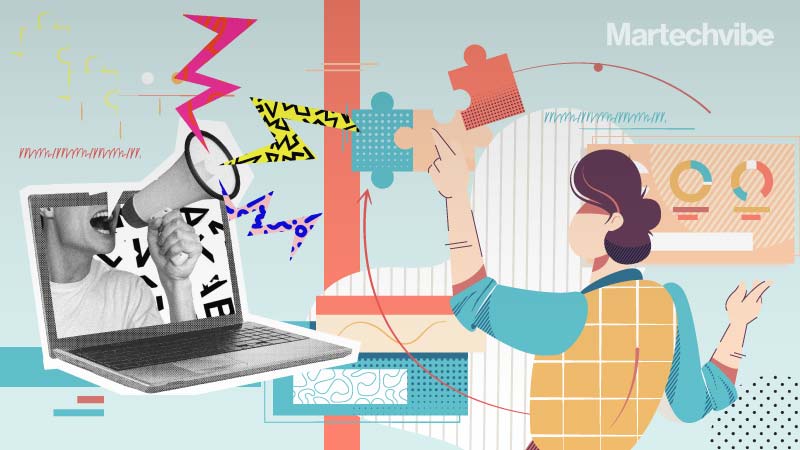Supporting Advertiser Controls In Platform Automation
For better flexibility and brand safety, business leaders are looking towards new ways to balance platform automation with advertiser controls. “Platform automation tools are making it easier than ever for brands to use machine learning in paid search and social advertising campaigns, but limited control to guide these algorithms significantly stifles growth potential,” said Ashwani […]
Topics

For better flexibility and brand safety, business leaders are looking towards new ways to balance platform automation with advertiser controls.
“Platform automation tools are making it easier than ever for brands to use machine learning in paid search and social advertising campaigns, but limited control to guide these algorithms significantly stifles growth potential,” said Ashwani Dhar, CEO, performance marketing agency, Adlucent.
On a mission to reimagine brand experiences, the company had decided to add a new feature, Adlucent Index, recently. It’s a technology that lets digital advertisers control ad platform automation.
Brand safety has been a major concern for advertisers and their customers. Even though Google’s 2020 Ad Safety report indicated a sensitive focus on brands’ need for ad control, they haven’t made much progress.
A 2021 study revealed that Google serves 48 per cent of all ad traffic on “fake” websites and credible ad servers such as Lockerdome and Outbrain make up over 66 per cent of fake and around 55 per cent of low-quality ad traffic. Such is the state of advertisements in the industry, and advertiser control along with platform automation can enhance brand safety immensely.
There was a time when managing keyword bids and tweaking them based on several different signals was considered a best-practice approach for platform targeting optimisation and performance. Today, it seems more convenient to optimise real-time bidding algorithms after a conversion emerges. Analysing the conversion based on data points derived from business objectives can help balance platform automation with advertiser controls.
“Adlucent Index answers marketers’ needs to strike a balance between platform automation and the human touch of understanding products, categories and seasonality. It allows brands to take control of their campaigns and prioritise data that is not always accessible to Google — whether that’s revenue, margin or predicted customer lifetime value, among other metrics, for campaign outcomes that have a true impact,” Dhar added.
The solution works directly with Google Smart Bidding to allow advertisers to control the valued and measured conversions. It customises how paid search and shopping campaigns are optimised per the business metrics.
Working with Google’s automation solutions, the Index controls how digital advertising campaigns in Google Ads value conversions. It utilises advertisers’ first-party data and augments real-time automated ad platform bidding algorithms into a custom algorithm to find better customers.
Marketing automation platforms have the best possibility to locate and identify the right customers at the right time, making it crucial for brands to integrate essential business goals into the company algorithms.
Last year, Microsoft reported major improvements for its Audience Ads with view-through conversions, in-market audience expansion and open beta for auto-generated remarketing lists. In line with Google Ads, Microsoft Advertising has also announced that by June, 2022, responsive search ads (RSAs) will be the only search and type for standard search campaigns. Although existing expanded text ads (ETAs) will continue to be, advertisers will create and edit RSAs only in standard search campaigns.
This move makes it easier for advertisers to work across both Microsoft and Google platforms without the need to account for differences in search ad types. With moderate ad control, the advertisers can adapt to work with both the brand’s machine learning models.
Although Google Ads already gave several automated targeting options to optimise creative and listings based on a systematic understanding of what every user would most likely respond to, the tech giant wanted to add more control to the automation elements. A few months ago, Google launched automation options to its display ads process to aid advertisers to maximise their ad results.
“In the new Display campaign experience, you’ll have all of the reach and performance you’re used to, with the ability to choose the level of automation you prefer in bidding, creatives and audiences. A smooth setup process will allow you to choose between automation or control upfront, and you’ll have the flexibility to change your automation choices at any time – without creating a new campaign,” said Google.
With Google to cross $200 billion in ad revenue, it’s clear that companies are growing their business with ads. Adding increased automation, many campaign types and bidding strategies, maintaining platform automation with advertiser controls gets complex, but effective. Google also added a new automated campaign type called Performance Max. It needs minimal setup and allows marketers to run ads across Google’s advertising channels.
Meanwhile, what is the state of advertising automation? Well, that’s another story altogether. Optimised, seamless, and easily accessible methods of transacting between inventory and media have only been realised in certain forms of advertising automation, such as programmatic. But it has to be more and expand beyond programmatic to include effective advertising across the omnichannel ecosystem.
With the help of AI tools or not, it’s worth investing in ad controls to balance platform automation. Marketers would definitely want their platform automation to direct their teams towards those customers who portray a higher Predicted Customer Lifetime Value. It might just be the weapon for flexibility and your brand to stay ahead of the competition.
If you liked reading this, you might like our other stories
Marketing Reimagined
Why Are Marketers Investing in AdTech During The Pandemic?






